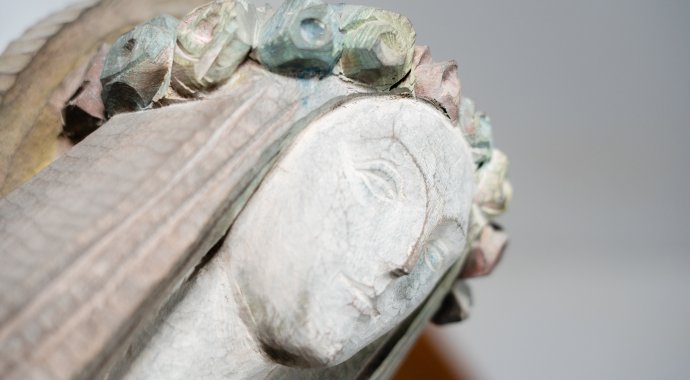News
Exhibition "Santos d'Afurada. Art, Devotion and Community".
An exhibition is on display at CIPA (Interpretive Center of the Heritage of Afurada) which aims to show the public a set of ten images sculpted by Altino Maia for the Afurada Church, inaugurated in 1955. The exhibition “Santos d’Afurada” is also available on the Google Arts & Culture platform(Part I and Part II). The inauguration session, which took place on July 4th, can be seen on CITCEM’s Youtube channel.
We invite you to attend and then visit CIPA!
In 1955, the sculptor Altino Maia designed nine large images for the new Afurada church, inaugurated on July 10 of that year. Following this commission, the artist also executed a Crucifix for the back wall of the chancel and, the following year, the set of fourteen reliefs of the Via Crucis, displayed since then on the north wall of the church. Distancing themselves in plastic and aesthetic terms from traditional images, the sculptures were rejected by the community, which soon gave them derogatory epithets such as “Black Saints” or “Saints of the Rodillas”. Although the sculptor defended the individual and free character of the creative act and this as a mirror of the author’s artistic conception, it is certain that the images were confined and enclosed in sacristy closets after Father Joaquim, the defender and protector of these sculptures for four decades, left. The pieces have thus created a gap between the concept of a work of art and the sculptural image as an agent of devotion, which necessarily requires reflection and dialogue.
The project “Santos d’Afurada” aims, in this sense, to make Altino Maia’s images public, to make their author known, to understand the reasons for the commission, to expose the plastic characteristics of his work, to reflect on the reasons that led the community to reject the images and to study, above all, Afurada in its double condition of place and community.
The exhibition at CIPA was inaugurated last July 4th, in the context of the São Pedro da Afurada Festivities. On the same day the catalog for the Exhibition was launched.
The project was coordinated by Professors Ana Cristina Sousa, Maria Leonor Botelho and a PhD student in Heritage Studies (FLUP), Cátia Oliveira. Involving a group of 21 students from the History of Art, Heritage and Visual Culture Master’s program, and developed almost entirely at a distance due to the pandemic context, this work is also revealing of the resilience and ability to overcome the constraints of the students and all entities involved. Among them are the University of Porto, Cinemateca Portuguesa – Museu do Cinema, Arquivo Histórico da Marinha, JN and the company Dot – Design e Comunicação, which gave unconditional support to this project.6

